- PRODUCTS
- MODEL LIST
- APPLICATIONS
- SUPPORT
- SALES/SERVICE
- BLOG
- ABOUT
Ocean Business 2019
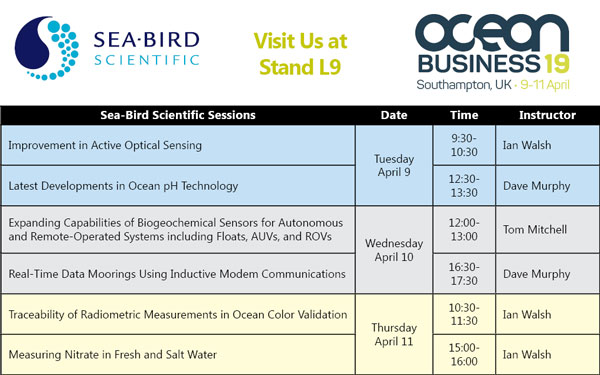
Sea-Bird Scientific is excited to provide six focused training sessions at Ocean Business 2019. Join our experts as we present key topics ranging from new technological developments to products that serve as the industry standard for oceanographic sensors.
Improvement in Active Optical Sensing: Ian Walsh
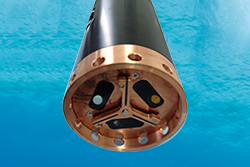 Active optical sensors such as fluorometers and backscattering sensors record measurements that convolve input from the target and the instrument itself. The challenge is that we cannot presume that the target is smooth on any scale of interest. Hence, the expected variance of the instrument determines the effective scale of the measurement. Understanding the sources of variance in active optical measurements is therefore fundamental to improving instrument design and use, and for validating the instrument. This presentation discusses efforts to characterize the uncertainty matrix for active optical sensors within the context of both calibration and field measurements.
Active optical sensors such as fluorometers and backscattering sensors record measurements that convolve input from the target and the instrument itself. The challenge is that we cannot presume that the target is smooth on any scale of interest. Hence, the expected variance of the instrument determines the effective scale of the measurement. Understanding the sources of variance in active optical measurements is therefore fundamental to improving instrument design and use, and for validating the instrument. This presentation discusses efforts to characterize the uncertainty matrix for active optical sensors within the context of both calibration and field measurements.Latest Developments in Ocean pH Technology: Dave Murphy
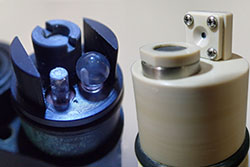 Ion Specific Field Effect Transistor (ISFET) measurements of pH in ocean waters offers great advantage in accuracy and long term stability over traditional sensors, and provide sampling density unachievable with bottle samples. This presentation will begin with an explanation of the technology and a review of calibration methods and standards. We will discuss field validation techniques using pH measured on a spectrophotometer and will conclude with a review of field results from ocean and nearshore moorings as well as autonomous floats and gliders.
Ion Specific Field Effect Transistor (ISFET) measurements of pH in ocean waters offers great advantage in accuracy and long term stability over traditional sensors, and provide sampling density unachievable with bottle samples. This presentation will begin with an explanation of the technology and a review of calibration methods and standards. We will discuss field validation techniques using pH measured on a spectrophotometer and will conclude with a review of field results from ocean and nearshore moorings as well as autonomous floats and gliders.Expanding capabilities of biogeochemical sensors: Tom Mitchell
Real-Time Data Moorings Using Inductive Modem Communications: Dave Murphy
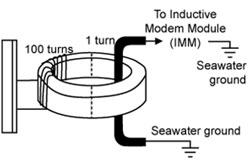 Real-time telemetry from moored sensors is the only way to provide timely and relevant data to scientists and policy decision makers. Inductive modem communication offers a mature and widely used technology for this application; without the need for a physical electrical connection to each instrument, users can leverage a mooring’s tether to transfer real-time data from an array of instruments. We will discuss the technology basics from hardware through operational protocols and will cover techniques for bringing the inductive signal from the mooring string into the surface buoy. The presentation will conclude with examples of operational moorings and some unusual applications.
Real-time telemetry from moored sensors is the only way to provide timely and relevant data to scientists and policy decision makers. Inductive modem communication offers a mature and widely used technology for this application; without the need for a physical electrical connection to each instrument, users can leverage a mooring’s tether to transfer real-time data from an array of instruments. We will discuss the technology basics from hardware through operational protocols and will cover techniques for bringing the inductive signal from the mooring string into the surface buoy. The presentation will conclude with examples of operational moorings and some unusual applications.Traceability of Radiometric Measurements in Ocean Color Validation: Ian Walsh
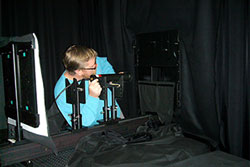 Traceability for ocean color remote sensing is fundamental to establishing the measurement technology’s uncertainty over time—uncertainty for both the in-situ sensors and the calibration methodology and instrumentation. Traceability and uncertainty determinations allow parsing of in-situ measurements into instrument and target uncertainties. Thus, the scaling of uncertainty with respect to the sensor defines the floor of downstream quality assurance for new data. Further, sensor uncertainty characterization determines the uncertainty related to stitching together of data sets across time as well as aggregating of concurrent data sets from multiple sources. This presentation discusses efforts to characterize the uncertainty matrix for radiometers.
Traceability for ocean color remote sensing is fundamental to establishing the measurement technology’s uncertainty over time—uncertainty for both the in-situ sensors and the calibration methodology and instrumentation. Traceability and uncertainty determinations allow parsing of in-situ measurements into instrument and target uncertainties. Thus, the scaling of uncertainty with respect to the sensor defines the floor of downstream quality assurance for new data. Further, sensor uncertainty characterization determines the uncertainty related to stitching together of data sets across time as well as aggregating of concurrent data sets from multiple sources. This presentation discusses efforts to characterize the uncertainty matrix for radiometers.Measuring Nitrate in Fresh and Salt Water: Ian Walsh
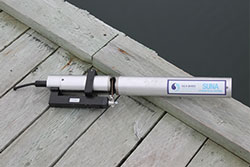 The UV absorption inversion technique for the determination of nitrate concentration in natural waters has proven to be robust across a wide variety of environments. The attraction of the measurement of the concentration of a chemical compound in solution without using wet chemistry is obvious, but the quality of the final data product is determined by understanding the uncertainties of the technique and the matrix of interferences. This presentation discusses the method and the matrix of uncertainties with particular attention to salinity.
The UV absorption inversion technique for the determination of nitrate concentration in natural waters has proven to be robust across a wide variety of environments. The attraction of the measurement of the concentration of a chemical compound in solution without using wet chemistry is obvious, but the quality of the final data product is determined by understanding the uncertainties of the technique and the matrix of interferences. This presentation discusses the method and the matrix of uncertainties with particular attention to salinity.
Dave Murphy
MS Electrical Engineering, Director of Research and Development
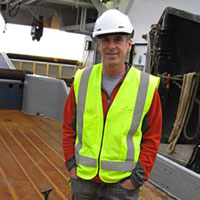
David Murphy is the Director of Research and Development at Sea-Bird Scientific. In addition to managing Sea-Bird’s engineering and science teams, his focus is on oceanographic sensor design, characterization, and calibration. He is responsible for Sea-Bird’s metrology work and has oversight of the calibration facility. He is an instructor for Sea-Bird’s training course, leading courses since 2000. He has been working at Sea-Bird since 1991, prior to that he worked at Texas A&M Department of Oceanography as a Research Engineer. He studied oceanography at the University of Washington and Electrical Engineering at Georgia Tech.
Ian Walsh, Ph.D.
Director of Science
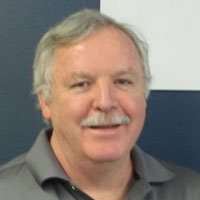
Dr. Ian Walsh received his B.S. from Case Institute of Technology at Case Western Reserve University, M.S. from the College of Oceanography at Oregon State University, and Ph.D. from Texas A&M University. His research interests are particle dynamics, including the use of the particle field to understand basic biogeochemical processes and the influence of physical forcing on those processes, carbon fluxes and fates including predictive modeling, and the development of imaging tools (hardware and software) for in-situ measurements of particle abundance and size distribution.
Tom Mitchell, Ph.D.
Vice President Commercial Team
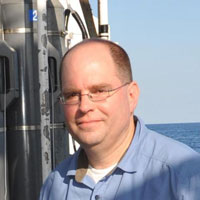
Dr. Mitchell’s technical background is Materials Science and Engineering with an emphasis on solid state physics. His R&D focus is optical and electrochemical sensors with a view toward providing low-power reagent-free measurements of biogeochemical parameters in ocean, coastal, and inland waters.


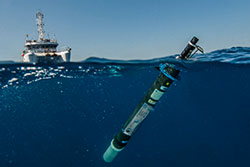 As programs focused on monitoring and understanding ocean biogeochemical processes become larger and more diverse, understanding the intercomparability of data sets between sensors becomes essential. As primary sensor deployment locations move from ship-managed profiling and fixed moored locations to remotely operated and both surface and underwater autonomous vehicles, the comparison of data between deployment methods is a critical consideration during data analysis. Starting from a discussion of intercomparibility of physical oceanographic sensors, this talk will discuss sensor capabilities such as response time and sampling frequency to look at criteria for considering data sets intercomparable. The talk will cover key biogeochemical parameters including dissolved oxygen, pH, fluorometry, backscatter, and nitrate. The talk will conclude with a discussion of best practices for ensuring high quality data collection regardless of a sensor’s deployment method.
As programs focused on monitoring and understanding ocean biogeochemical processes become larger and more diverse, understanding the intercomparability of data sets between sensors becomes essential. As primary sensor deployment locations move from ship-managed profiling and fixed moored locations to remotely operated and both surface and underwater autonomous vehicles, the comparison of data between deployment methods is a critical consideration during data analysis. Starting from a discussion of intercomparibility of physical oceanographic sensors, this talk will discuss sensor capabilities such as response time and sampling frequency to look at criteria for considering data sets intercomparable. The talk will cover key biogeochemical parameters including dissolved oxygen, pH, fluorometry, backscatter, and nitrate. The talk will conclude with a discussion of best practices for ensuring high quality data collection regardless of a sensor’s deployment method.